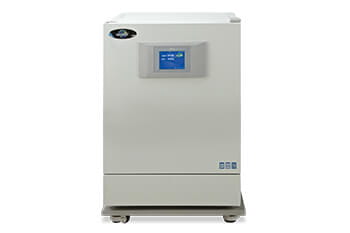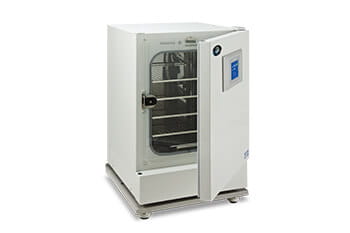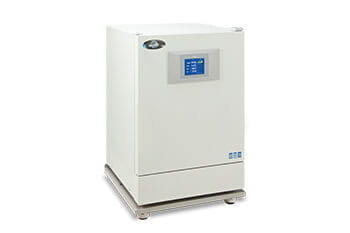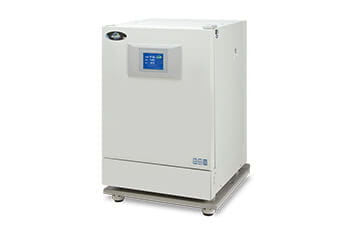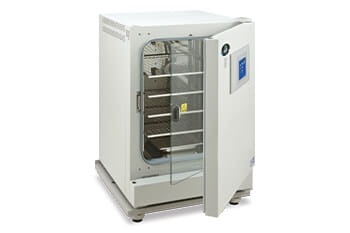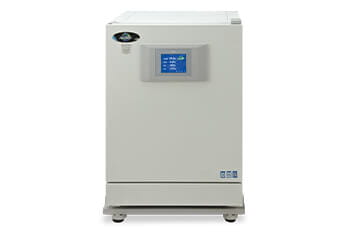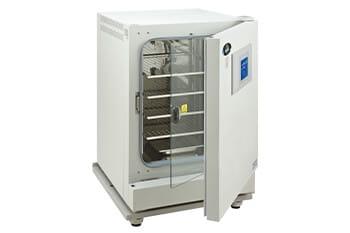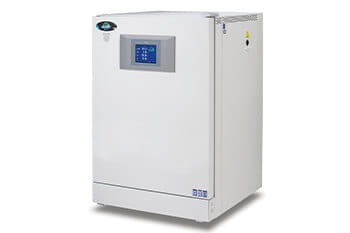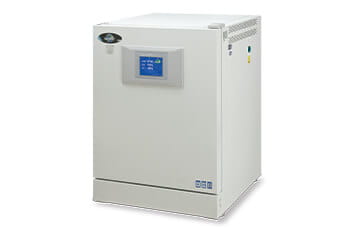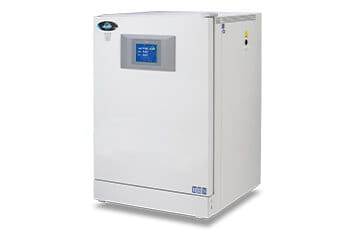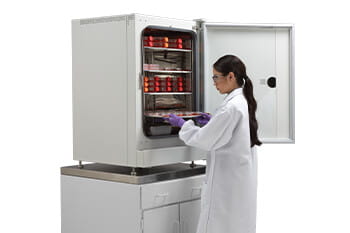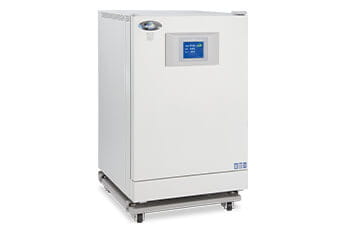Article
Active vs. Passive Humidity Control in CO₂ Incubators
1/20/2025 John PetersHumidity control is a critical factor in maintaining optimal conditions within CO₂ incubators, ensuring the successful growth of cell cultures, tissues, and embryos. This article explores the differences between active and passive humidity control systems, the necessity of humidity control in CO₂ incubators, and the applications best suited for each method.
Why Is Humidity Control Needed in CO₂ Incubators?
Maintaining appropriate humidity levels in CO₂ incubators is essential for several reasons:
- Prevention of Media Desiccation: High humidity levels (85–95%) prevent excessive evaporation of culture media, which can lead to increased concentrations of salts and minerals, causing toxicity and cell death (NuAire, "In-VitroCell NU-5820 Humidity Control CO₂ Incubator").
- Minimized Contamination Risks: Proper humidity levels reduce the formation of dry spots where contaminants such as mold or bacteria can thrive (NuAire, "Direct Heat or Water Jacketed CO₂ Incubators").
- Maintaining Temperature Stability: High humidity reduces evaporative cooling, helping to maintain uniform temperature conditions across the incubator chamber (NuAire).
- Support for Sensitive Cultures: Stem cells, embryos, and other sensitive cultures require precise humidity control to ensure reproducibility and viability (Mitchell et al., "The Chemical Composition of the Adult Human Body").
- Replicating Physiological Conditions: Maintaining high humidity levels in CO₂ incubators helps replicate the human body's internal environment, which is crucial for research involving human cells and tissues (Mitchell et al.).
Understanding Active Humidity Control
Active humidity control systems use sensors and automated mechanisms to maintain relative humidity (RH) at precise levels, typically up to 90% or higher. Key components include:
- Sensors: Solid-state humidity sensors monitor RH levels and initiate adjustments as needed (NuAire).
- Steam Injection: Systems generate steam and disperse it evenly within the chamber, ensuring rapid recovery after door openings (NuAire).
- Fast Recovery: Active systems can recover RH to desired levels within minutes following disruptions like door openings (NuAire).
Applications for Active Humidity Control:
- Stem Cell Research: Critical for maintaining undifferentiated stem cells under controlled conditions.
- IVF Laboratories: Embryo cultures are highly sensitive to RH and environmental fluctuations (NuAire, "In-VitroCell NU-5820 Humidity Control CO₂ Incubator").
- Tissue Engineering: Complex tissues require stable, high-humidity environments for growth (NuAire, "Direct Heat or Water Jacketed CO₂ Incubators").
- Hypoxia Studies: Controlled humidity is essential when working with low-oxygen conditions (NuAire, "In-VitroCell NU-5820 Humidity Control CO₂ Incubator").
Understanding Passive Humidity Control
Passive humidity control relies on the natural evaporation of water from a pan located within the incubator chamber. Key features include:
- Natural Evaporation: Water evaporates naturally, increasing RH without automation or additional components (NuAire).
- No Sensors: Passive systems do not monitor RH in real-time, leading to variability in humidity levels (NuAire).
- Slower Recovery: Following door openings, RH levels take longer to stabilize compared to active systems (NuAire).
Applications for Passive Humidity Control:
- Routine Cell Culture: Suitable for robust cell lines that can tolerate minor environmental changes (NuAire).
- Microbial Research: Less precise humidity control is sufficient for growing bacteria and fungi (NuAire).
- Budget-Conscious Labs: Passive systems are cost-effective and require minimal maintenance (NuAire).
Active vs. Passive Humidity Control: Key Differences
| Feature | Active Humidity Control | Passive Humidity Control |
|---|---|---|
| Precision | High (±5% RH accuracy) | Low |
| Recovery Time | Rapid (minutes to recover) | Slower |
| System Complexity | Sensors and steam injectors required | Water pan only |
| Applications | IVF, stem cell research, hypoxia studies | Routine cell cultures, microbial work |
| Cost | Higher | Lower |
Breakdown of NuAire Incubator Models with Humidity Control Options
Active Humidity Control Models
- In-VitroCell NU-5820: Features advanced humidity sensors and steam injection for precise RH control and rapid recovery. Learn More
- In-VitroCell NU-5841: Offers active RH monitoring and control, ideal for sensitive applications. Supports both RH and O₂ control. Learn More
- In-VitroCell NU-5720: Designed for labs requiring advanced environmental stability. Learn More
- In-VitroCell NU-5741: Provides precise RH control for high-demand workflows. Supports both RH and O₂ control. Learn More
Models with Humidity Monitoring
- In-VitroCell NU-8625: Incorporates a humidity monitoring system for enhanced environmental feedback. Features water-jacketed heating. Learn More
- In-VitroCell NU-8645: Includes advanced RH monitoring, ideal for critical applications. Features water-jacketed heating. Learn More
Passive Humidity Control Models
- In-VitroCell NU-5800: Designed for passive humidity control with reliable performance. Larger chamber than NU-5700 models. Learn More
- In-VitroCell NU-5810: Offers robust passive humidity control for standard lab workflows. Includes a decontamination program and is one of NuAire's most popular models. Larger chamber than NU-5710. Learn More
- In-VitroCell NU-5831: Ideal for routine cell culture applications with passive control. Supports O₂ control for hypoxic studies. Learn More
- In-VitroCell NU-5700: Cost-effective incubator with passive humidity control. Learn More
- In-VitroCell NU-5710: Designed for efficient humidity management and budget-friendly labs. Includes a decontamination program and is one of NuAire's most popular models. Learn More
- In-VitroCell NU-5731: Reliable for microbial research and standard cell cultures. Supports O₂ control for hypoxic studies. Learn More
- In-VitroCell NU-8600: Tailored for microbial and standard cell culture research with passive control. Features water-jacketed heating. Learn More
- In-VitroCell NU-8631: Optimized for low-maintenance, routine cell culture needs. Supports O₂ control for hypoxic studies. Features water-jacketed heating. Learn More
Conclusion
Selecting between active and passive humidity control depends on the application, precision needs, and budget constraints of the laboratory.
Bibliography
- Mitchell, H. H., et al. "The Chemical Composition of the Adult Human Body and Its Bearing on the Biochemistry of Growth." Journal of Biological Chemistry, vol. 158, no. 3, 1945, pp. 625–637.
- NuAire. "Direct Heat or Water Jacketed CO₂ Incubators: Which Is Best for Your Research?" https://www.nuaire.com/resources/white-papers/direct-heat-vs-water-jacket-co2-incubators .
- NuAire. "In-VitroCell NU-5820 Humidity Control CO₂ Incubator." https://www.nuaire.com/products/co2-incubators/direct-heat/in-vitrocell-nu-5820-humidity-control-co2-incubator .
- LabCompare. "Microbiology vs. CO₂ Incubators." https://www.labcompare.com/10-Featured-Articles/191133-Microbiology-vs-CO2-Incubators .
- LabCompare. "How to Make Sure Your CO₂ Incubator Is Working Properly." https://www.labcompare.com/Bench-Tips/137449-How-to-Make-Sure-Your-CO2-Incubator-Is-Working-Properly .

